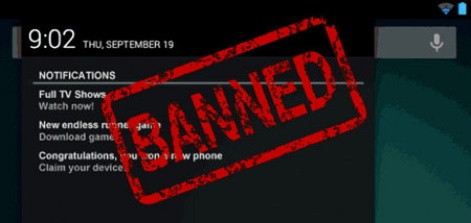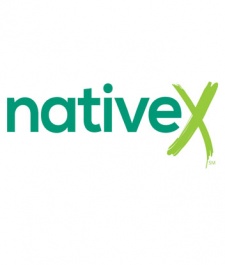Rob Weber co-founded NativeXin 2000. As CEO, from inception through November 2007, and as senior VP, thereafter, Rob grew NativeX into a leading distributor of mobile and web applications.
Today, Rob oversees and focuses on the growth of the NativeX Network, an application network that increases revenue, distribution, and engagement for iOS, Android and web apps.
About a month ago, Google quietly announced a new Android policy update that will prevent mobile ad networks from spamming users with push notifications, advertisements and more.
Although it's a seemingly minor update, it's actually one of the best things to happen to Android users and a huge blow to mobile ad networks who stand to lose tens of millions in revenue.
Bringing control
It's no secret that Android has been playing catch up to iOS' brilliant user experience for years.
The Android ecosystem has been plagued with badly designed OS skins (HTC's Sense, Motorola's Motoblur, Samsung's TouchWiz) and fragmentation.
In opposition to Apple's tight control, Google's lack of guidance has allowed mobile ad networks and developers to degrade the user experience even further in pursuit of the almighty dollar.
Push notifications that were once a helpful feature were been turned into an annoyance that displayed unwanted advertising. Many of the offending apps would also sneak the ads into notification trays without asking for permission, which left users confused as to where they were originating from.
Our house, our rules
On 20 August 2013 Android's policy was updated to read: "Apps and their ads must not add homescreen shortcuts, browser bookmarks, or icons on the user's device as a service to third parties or for advertising purposes ...

"Apps and their ads must not display advertisements through system level notifications on the user's device, unless the notifications derive from an integral feature provided by the installed app. (e.g., an airline app that notifies users of special deals, or a game that notifies users of in-game promotions)."
Developers were given 30 days to comply, after which their apps were at risk of being removed. No doubt these changes will ultimately result in a much better user experience for the average Android user, but they also drastically affect multiple companies and tens of thousands of mobile developers - possibly eliminating hundreds of millions in total revenue.
There are several companies involved in serving push notification ads (Airpush, SendDroid, InMobi, and Leadbolt) but the largest and most successful company to offer push notification ads is Airpush. Recently, its CEO Asher Delug announced revenues of $150 million by the end of 2013 and plans for an IPO in 2014.
Quality counts
Now, it might seem a bit unusual that as the founder and vice president of a mobile ad network I believe this policy is a step in the right direction.
When these ad formats started popping up several years ago we faced a choice at NativeX: follow our competition, even though it felt wrong or invest our resources in better ad selection technology using predictive analytics.
In an industry obsessed with growth and quick exits I can tell you it wasn't an easy call. But, for the past 13 years I had built our company around mid-western values and always being a 'white hat' player.
In the end, we decided to focus on our technology in favor of long term, sustainable growth and I'm so glad we did.
Clearing out the spammy ads on Android will clear the way for new, innovative native ad formats which produce strong monetization for (app or game) developers.
In our testing, native ads have outperformed standard display ads by up to 10-fold, and do so by respecting the user.
This new policy by Google isn't just a win for Android and its users; it's also a win for companies who make the moral choice in the absence of guidance.
About NativeX
NativeX, formerly W3i, is a leader in innovative monetization and user acquisition solutions for mobile and desktop apps.
For publishers and developers who want to monetize with advertising that really works, NativeX is the marketing platform that is reinventing in-app advertising to create more effective and engaging ad experiences that enable developers to build successful businesses around their apps.
Native advertising becomes part of the user experience and it outperforms standard display advertising by 150 percent, often doubling or tripling revenue for publisher partners.





















